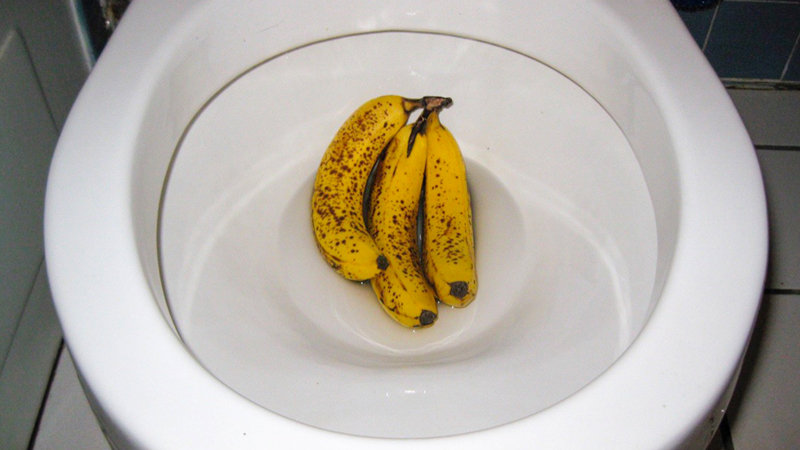Is it Acceptable to Flush Food in the Toilet?
Is it Acceptable to Flush Food in the Toilet?
Blog Article
The content which follows on the subject of Think Twice Before Flushing Food Down Your Toilet is amazingly attention-grabbing. You should take a look.

Intro
Many individuals are often confronted with the dilemma of what to do with food waste, especially when it comes to leftovers or scraps. One common inquiry that occurs is whether it's alright to flush food down the bathroom. In this short article, we'll explore the reasons why people could take into consideration flushing food, the effects of doing so, and alternate methods for correct disposal.
Reasons individuals may take into consideration flushing food
Absence of understanding
Some people may not be aware of the prospective harm triggered by purging food down the bathroom. They might incorrectly think that it's a safe technique.
Benefit
Purging food down the commode may look like a quick and easy remedy to dealing with unwanted scraps, specifically when there's no close-by trash bin offered.
Negligence
In some cases, individuals may merely select to flush food out of large negligence, without taking into consideration the effects of their actions.
Effects of flushing food down the toilet
Ecological influence
Food waste that ends up in rivers can contribute to air pollution and damage marine ecosystems. Furthermore, the water made use of to flush food can strain water resources.
Pipes issues
Flushing food can result in clogged up pipelines and drains, causing pricey pipes repairs and hassles.
Kinds of food that must not be purged
Coarse foods
Foods with coarse appearances such as celery or corn husks can obtain entangled in pipelines and create obstructions.
Starchy foods
Starchy foods like pasta and rice can soak up water and swell, bring about blockages in pipelines.
Oils and fats
Greasy foods like bacon or food preparation oils need to never ever be flushed down the toilet as they can solidify and create blockages.
Correct disposal methods for food waste
Making use of a waste disposal unit
For homes geared up with garbage disposals, food scraps can be ground up and flushed through the plumbing system. However, not all foods appropriate for disposal in this manner.
Recycling
Certain food packaging products can be reused, minimizing waste and reducing environmental influence.
Composting
Composting is a green method to get rid of food waste. Organic materials can be composted and made use of to enhance soil for gardening.
The importance of appropriate waste management
Minimizing ecological damage
Correct waste management methods, such as composting and recycling, aid reduce pollution and protect natural deposits for future generations.
Protecting plumbing systems
By preventing the technique of flushing food down the commode, homeowners can avoid expensive plumbing repair services and keep the honesty of their plumbing systems.
Conclusion
In conclusion, while it may be tempting to flush food down the toilet for benefit, it is necessary to understand the prospective repercussions of this activity. By adopting proper waste administration techniques and getting rid of food waste properly, people can add to much healthier pipes systems and a cleaner atmosphere for all.
FLUSH FOOD DOWN THE TOILET?
FLUSHING FOOD CAN CAUSE BLOCKED DRAINS IN YOUR HOME
All of the plumbing fixtures in your home are connected to the same sewer pipe outside of your home. This outdoor sewer pipe is responsible for transporting all the wastewater from your home to the Council sewer mains. Even small pieces of food that go down the kitchen sink can cause problems for your sewer. It should therefore be obvious that flushing larger bits of food, such as meat, risks a clog in either the toilet itself or the sewer pipes. Flushing greasy food is even more problematic because oil coagulates when it cools, coating the interior lining of your pipes.
THE TOILET IS NOT A BIN
Food isn’t the only thing that people shouldn’t be flushing down the toilet. People use the toilet to dispose of all kinds of things such as tampons, makeup wipes, dental floss, kitty litter and even underwear. Water goes to great lengths to educate residents about the high costs and stress placed on wastewater treatment systems simply from people flushing the wrong stuff down the toilet. It costs taxpayers millions of dollars each year, and homeowners thousands in blocked drain repairs.
FLUSHING FOOD IS A WASTE OF WATER
Flushing food is a waste of our most precious resource - water. In June this year Level 1 water restrictions were introduced to protect water supply from drought conditions. Much of New South Wales continues to be affected by prolonged drought with recent figures revealing up to 97 per cent of the state remains in drought. Depending on whether you have a single or dual flush toilet, every single flush uses between five and 11 litres of water. In the current climate this is a huge amount of water to be wasting on flushing food that should be placed in the bin (or better yet, the compost).
https://www.jabplumbingsolutions.com.au/blog/can-you-flush-food-down-the-toilet

Do you like more info about Is it safe to flush food (especially rice) down the toilet?? Post feedback directly below. We would be delighted to know your views about this posting. Hoping that you visit us again in the near future. If you appreciated our article if you please don't forget to share it. I take joy in your readership.
Get Your Estimate Now Report this page